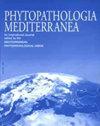Identification of multi-race Fusarium wilt resistance in chickpea (Cicer arietinum L.) using rapid hydroponic phenotyping
IF 1.9
3区 农林科学
Q2 AGRONOMY
引用次数: 1
Abstract
Fusarium wilt, caused by Fusarium oxysporum f. sp. ciceris (Padwick) Matuo and K. Sato is a major cause for low productivity of chickpea. Presence of multiple pathogenic races makes it difficult for the breeder to screen for Fusarium wilt resistance. Twenty-two chickpea genotypes were grown in Hoagland solution and inoculated with five different F. oxysporum races two isolates of each race), including host and pathogens from the major chickpea growing region of India. The resistant chickpea line “WR 315” showed a “highly resistant” reaction, and the susceptible line “JG 62” showed a “highly susceptible” reaction across all pathogen races and isolates. However, the parent lines “Pusa 372” and “JG 11” showed “susceptible” reactions, while the marker-assisted backcrossing (MABC) lines of “Pusa 372” (IL.11,12,14) and “JG 11” (IL.15,16,17) were superior for assessed characters (lengths of roots and shoots, fresh and dry weights), and were highly resistant to most races. This is the first study to use race specific screening of MABC lines using hydroponic host culture in chickpea.利用快速水培表型法鉴定鹰嘴豆多品种抗枯萎病能力
鹰嘴豆枯萎病(Fusarium oxysporum f. sp. ciceris (Padwick) Matuo and K. Sato)是造成鹰嘴豆产量低下的主要原因。多致病小种的存在使育种者难以筛选枯萎病抗性。在Hoagland溶液中培养了22种基因型的鹰嘴豆,并接种了5个不同的尖孢镰刀菌小种(每个小种2个分离株),包括来自印度鹰嘴豆主要种植区的宿主和病原体。鹰嘴豆抗性品系“WR 315”和敏感品系“JG 62”在所有致病小种和分离株中均表现为“高度敏感”反应。亲本“Pusa 372”和“JG 11”表现出“敏感”反应,而标记辅助回交(MABC)系“Pusa 372”(IL.11、12、14)和“JG 11”(IL.15、16、17)在评价性状(根、梢长、鲜、干重)方面表现优异,对大多数小种具有较高的抗性。这是首次在鹰嘴豆中使用水培寄主培养技术筛选MABC系的研究。
本文章由计算机程序翻译,如有差异,请以英文原文为准。
求助全文
约1分钟内获得全文
求助全文
来源期刊

Phytopathologia Mediterranea
生物-植物科学
CiteScore
4.40
自引率
8.30%
发文量
28
审稿时长
6-12 weeks
期刊介绍:
Phytopathologia Mediterranea is an international journal edited by the Mediterranean Phytopathological Union. The journal’s mission is the promotion of plant health for Mediterranean crops, climate and regions, safe food production, and the transfer of new knowledge on plant diseases and their sustainable management.
The journal deals with all areas of plant pathology, including etiology, epidemiology, disease control, biochemical and physiological aspects, and utilization of molecular technologies. All types of plant pathogens are covered, including fungi, oomycetes, nematodes, protozoa, bacteria, phytoplasmas, viruses, and viroids. The journal also gives a special attention to research on mycotoxins, biological and integrated management of plant diseases, and the use of natural substances in disease and weed control. The journal focuses on pathology of Mediterranean crops grown throughout the world.
The Editorial Board of Phytopathologia Mediterranea has recently been reorganised, under two Editors-in-Chief and with an increased number of editors.
 求助内容:
求助内容: 应助结果提醒方式:
应助结果提醒方式:


